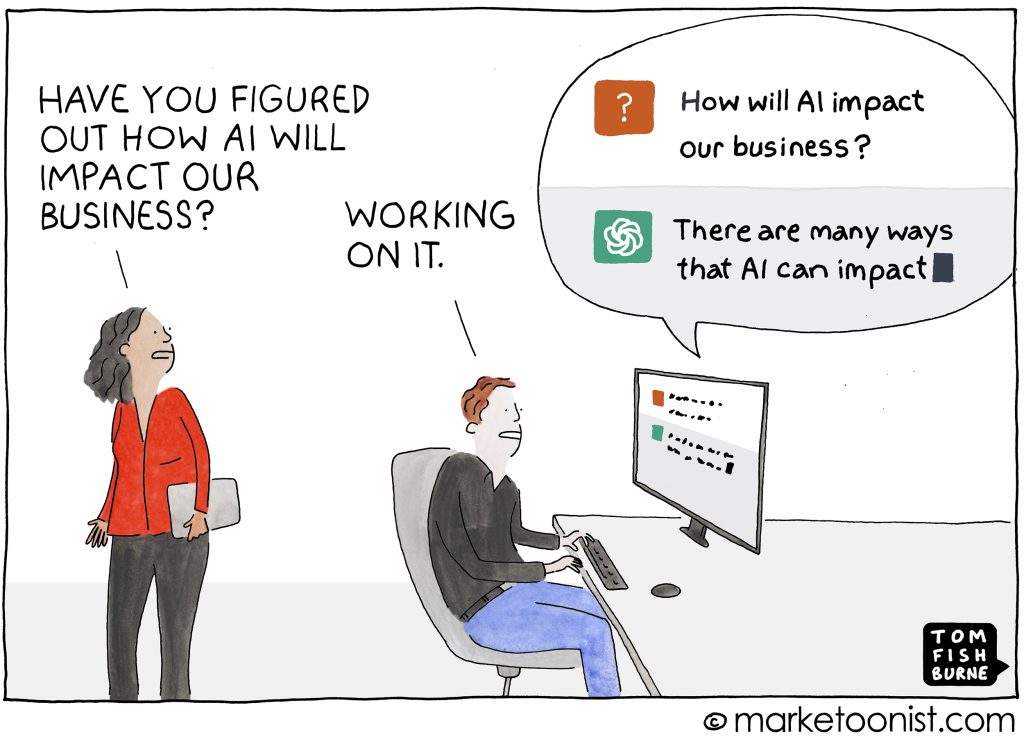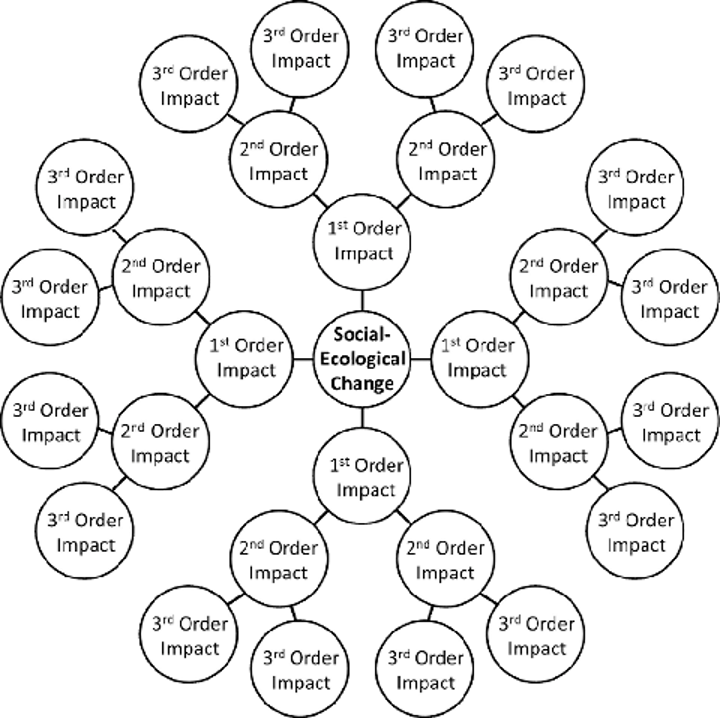Since its release in November, interest in and use of ChatGPT has exploded (100 million users and counting). With its arrival and the appearance of other generative artificial intelligence tools, we now have accessible technologies that can turn text into images, videos or music – and everyone is paying attention. As these tools embed themselves into everyday society, all of us are trying to understand the short- and long-term impact of generative AI. Amid this sea change, business leaders are asking themselves questions such as:
- How can I use these tools to improve employee productivity and creativity now?
- How can I use these tools to transform my organization long term?
- How are my customers using these technologies now and what does that mean for my firm?
- How will these technologies change my business model?
- What are the ethical and legal uses of these technologies?

A powerful way to organize the questions above is to put them in two categories. The first of these is Applications. Questions of this sort generally seek to uncover how one can use these technologies to better achieve a given mission and goals. The second category is Implications, which take a broader view to look at how these technologies will change the organization, its environment and the world. Put more simply, Applications look at how AI can be used; Implications examine what effect these technologies will have on us.
We can put the two together into what I am calling the Technology Applications and Implications Model (TAIM, pronounced “tame”). Combining the above categories with a division into the short term and long term produces a 2×2 matrix as seen below.[1]

One can then take the questions the company faces and apply them to the model, then proceed to create internal task forces to address them, as seen below.

Organizing Internal Task Forces to Define a Company’s AI Approach
As we can see, the TAIM matrix produces five task forces, each of which would require a different set of skills and participants. Below is one way of defining these task forces in the context of artificial intelligence.
Task Force 1 is focused on increasing employee productivity and creativity. This task force needs to be cross-functional to ensure an understanding of how each function (e.g., human resources, accounting, etc.) might use AI in its domain. It also must be composed of people who are AI-fluent, are using the tools already and are always exploring new ways to apply the technology.[2]
Task Force 2’s mission is understanding customer use of AI. Therefore, this task force must have market-facing employees. For example, it should include sales leaders and technologists who talk to leading-edge customers. It should also consist of personnel who have the skills to take that information and understand the consequences of it by using tools such as the Implication Wheel.
The Implication Wheel puts an item (e.g., generative AI) in the center and then examines the first-, second- and third-order effects of that item on, in this case, the firm. With this new knowledge, the team can then factor in the learnings to bring forward recommendations to the company.

Task Force 3 is focused on ethical and legal use of AI. This task force may need to bring in outside ethicists to work with members who have company and industry domain knowledge to develop its findings. It will also require legal counsel. Both the legal and ethical uses of generative AI are being debated and defined right now – for example, the U.S. Patent Office said images generated from text using generative AI do not qualify for copyright protection – and companies must prepare to align with the changes that will surely come.
Task Force 4 is charged with building an AI transformation strategy. It should be composed of staff members who are involved in digital transformation as well as representatives from each function who are digitally literate and have a deep grasp of industry trends.
Task Force 5 is responsible for understanding the business model impacts of AI (and therefore industry impacts of AI as well). This task force will require people who have both an extensive knowledge of the industry (e.g., marketing personnel) and the firm’s business model (financial staff) as well as organization strategists and open thinkers who possess futurist skills (either sourced internally or externally). As a side note, there may be some overlap of personnel between Task Force 4 and Task Force 5, and the two groups must be in constant contact.
Leadership Required for Successful Implementation
This task force structure must be overseen by an overall meta-task force leadership team. This team would be responsible for ensuring each task force stays on track, providing resources to each task force so it can accomplish its mission and convening regular interlocks of taskforce leaders to ensure alignment and cross-pollination of ideas among the different units. The meta-task force leadership team would comprise senior leaders, the taskforce leaders themselves and staff who have the project management skills to drive progress and results.
Here at UNC, we have proposed to use the TAIM methodology complete with cross-discipline task forces to navigate and leverage AI within our university and our ecosystem. This approach will have to be broad, as we consider the applications and implications of AI not only on our students, faculty and staff but society and humanity as well. Higher education is a field that is grappling with the AI challenge on multiple levels, from how students are allowed to ethically use generative AI to how AI will change the industry to what AI can tell us about being human.
In sum, the TAIM task force approach is an effective and efficient means for an organization to navigate any important technological change and respond proactively to carry out its mission and achieve competitive advantage. Perhaps your company would benefit from piloting it to address the significant change heralded by AI.
[1] This approach can also be used for any new technology, trend or change that one wants to systematically analyze.
[2] For more examples of creative ways people are using ChatGPT, I recommend the work of Ethan Mollick.
- Keyword(s):
- ai 25
- future of work 40
- workforce disrupted 69

A New Model to Leverage the Impact of ChatGPT and AI